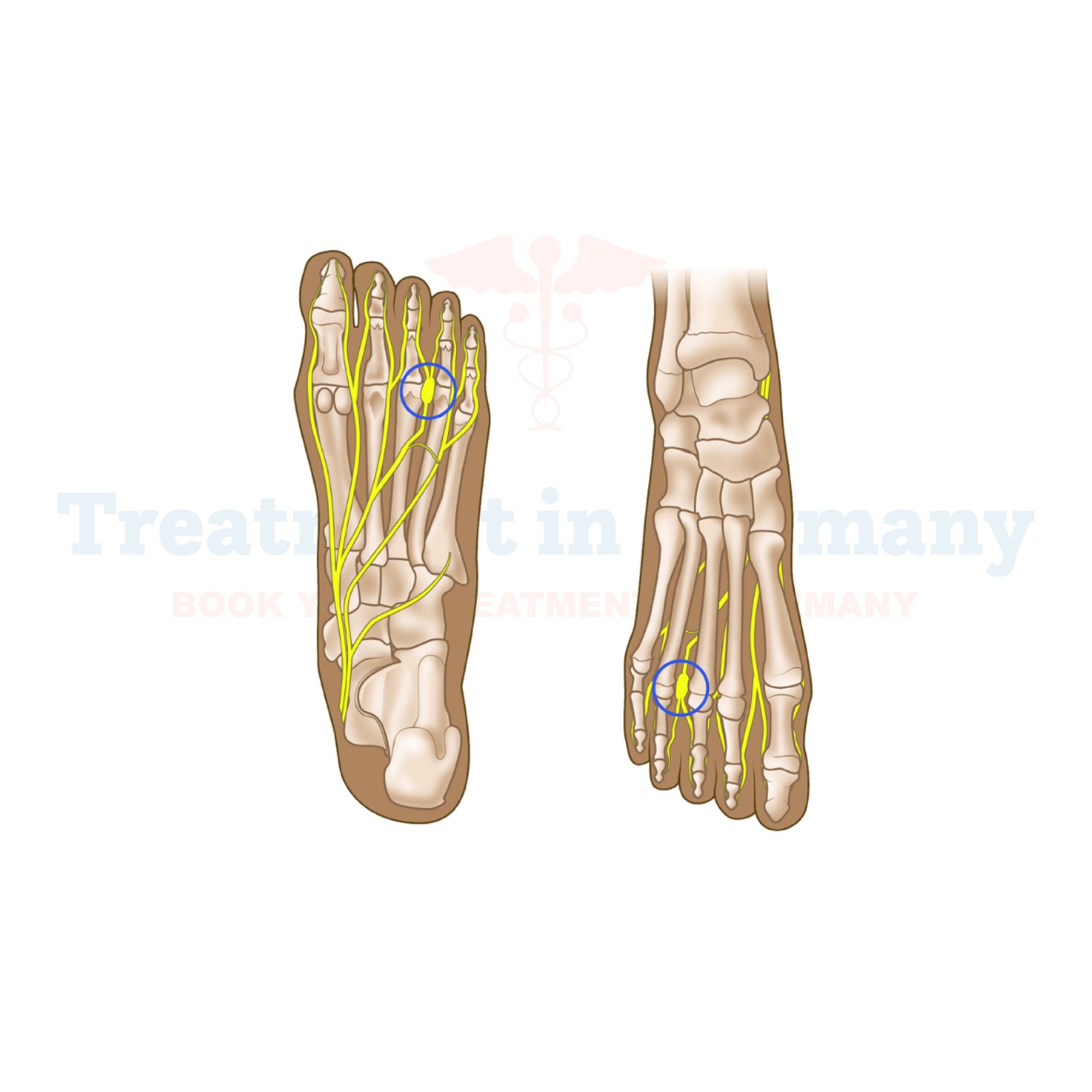What is Morton's Neuroma?
Morton's neuroma is a painful condition caused by the thickening of tissue around the nerves leading to your toes. It is a common nerve compression issue, affects many active individuals, particularly athletes. It often results in discomfort when walking or performing daily activities. Without treatment, the pain may worsen and limit your ability to stay active.
This condition can significantly impact your quality of life.Symptoms of Morton’s Neuroma may vary from person to person but commonly includes:
Causes of Morton's Neuroma
Understanding the root cause can help guide both preventative care and treatment. Several factors can contribute to the development of Morton's neuroma, including:
How is Morton's Neuroma Diagnosed?
A proper diagnosis is essential for effective treatment. Getting an early diagnosis can lead to more effective relief. Specialists in Germany carry out comprehensive evaluations, such as:
Treatment Options for Morton's Neuroma
Germany offers world-class treatment solutions to manage and alleviate Morton's neuroma. Options include:
Prevention and Management Strategies
Avoiding future discomfort is essential, even post-treatment. These strategies complement your treatment and promote long-term comfort.Here’s how you can reduce your risk:
Why Choose Treatment in Germany?
Choose Germany for a stress-free path to recovery with expert support every step of the way. Here’s what sets Germany apart in the field of foot and nerve health:
Conclusion
Don't let Morton's Neuroma disrupt your life any longer. Germany offers cutting-edge medical solutions combined with compassionate care to ensure the best possible outcomes. Take the first step toward a pain-free future and regain control of your mobility and well-being. With advanced treatment options and expert medical professionals, relief is within your reach. Trust in Germany's world-class healthcare system to provide the care you deserve. Don't wait—your path to a more comfortable, active life begins today. Take charge of your health and reclaim the freedom to walk, run, and live without limits.
👉 Contact us for further information and receive acomplimentary consultation.

.webp)
.webp)
 (1).webp)
 (1).webp)


.webp)
.webp)
 (1).webp)
 (1).webp)

